BackTrack Linux is now known as Kali Linux. You may read all Kali Linux articles and tutorial at http://linuxbsdos.com/category/kali-linux.
BackTrack is a Linux distribution designed for penetration testers and other security professionals, or those who want to mess with all the best security and penetration testing applications the free software community has to offer.
In terms of hacking software, BackTrack 5 is loaded, so this is not a distribution you want to install just to check email and “like” your Internet buddies, though, nothing stops you from using it just for those purposes. For an idea of the type of applications that ship with BackTrack 5 R2, see BackTrack 5 Revolution 2 screen shots.
There are two editions of BackTrack 5 R2 – a GNOME 2 edition and a KDE edition. (BackTrack 5 R2 is the latest release of BackTrack.) This tutorial shows how to create partitions manually for installing BackTrack 5 GNOME. A future article will show how to do the same for the KDE edition. A side objective of this tutorial is to demonstrate that BackTrack 5 R2 can be installed completely on logical partitions. So all the partitions that will be created in this article, will be logical partitions. This could come in handy in a situation where you want to dual-boot it with another distribution or operating system, but where there is only one primary partition left in the target hard drive, or where the only free space left is on an extended partition.
Note: Live DVD installation images of BackTrack 5 R2 GNOME and KDE are available for download, which means you do not have to install them to a hard drive.
If you are new to disk partitioning in Linux, it is highly recommended that you read guide to disks and disk partitions in Linux. If you have not done so already, download the GNOME edition of BackTrack 5 R2 from here. Burn it to a DVD and boot your computer from it.
The boot menu is shown below. Selecting the default or first option should cause the system to boot into a Live environment.
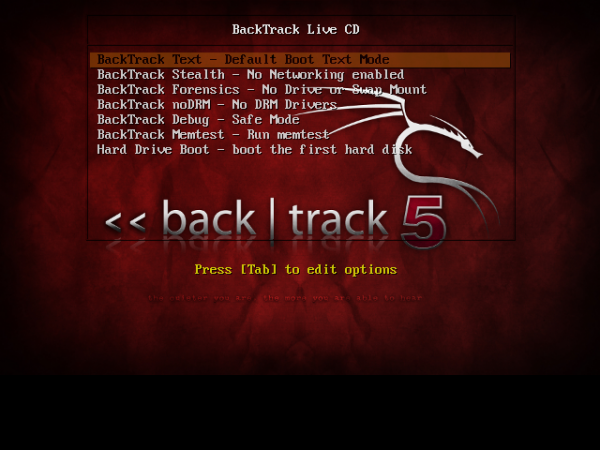
However, it is not a graphical Live environment. You will need to start the graphical desktop manually. To do that, type startx at the command prompt. The system should now boot into a GNOME 2 desktop. To start the installation, click on the Install BackTrack icon on the desktop.
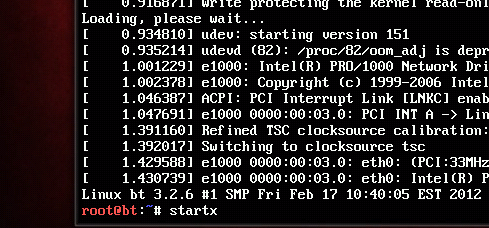
BackTrack 5 is based on an older edition of Ubuntu, so if you have used a previous release of Ubuntu, the installer should be very familiar. It is just a 7-step installer, but the disk partitioning part starts at Step 4, so click until you get to that step. The step in question is shown below. Since the objective is to create partitions manually, select the option that says, Specify partitions manually (advanced). Click the Forward button.
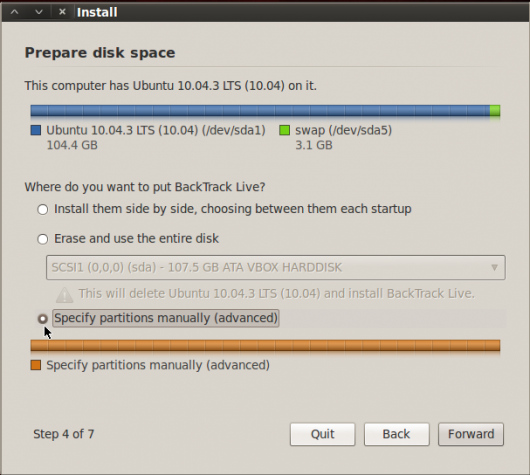
That should get you to this window, where all existing partitions on the target hard drive should be listed. The system used for this tutorial had an existing installation of a Linux distribution on it, but I will be deleting the partitions, freeing up all available space.
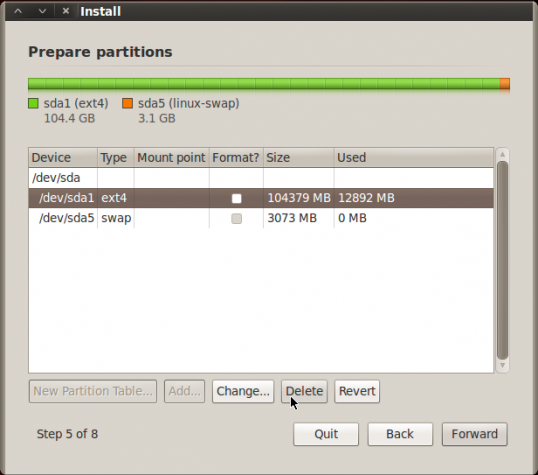
Ok, all available space has been liberated. Time to start creating partitions. Select the free space and click Add. Keep in mind that three partitions will be created for installing BackTrack 5 R2. These are a /boot, /, and Swap partitions. And in line with the objectives of this tutorial, they will all be logical partitions. On a default installation, the installer creates just two partitions – / and Swap.
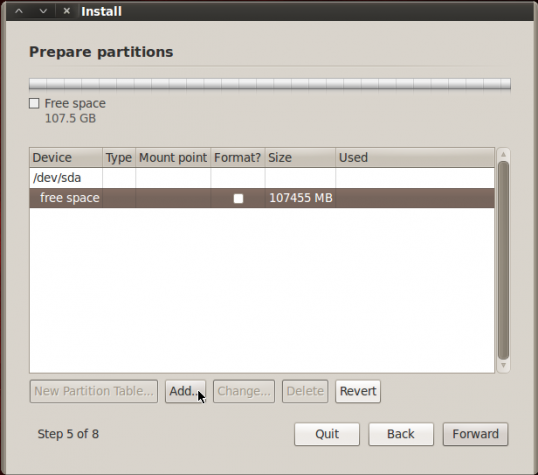
The first partition will be mounted at /boot. This is where all boot-related files and programs will be located. GRUB Legacy is the boot loader, so this is where its files will be located. On a new installation of BackTrack 5 R2, the boot partition takes up about 83 MB of disk space, so any value more than 100 MB should be good for the size allocated to it. For this tutorial, I allocated 500 MB to it. For the file system (Use as), I chose Ext4. You could choose any other file system from that dropdown menu, but Ext4 is now the default on virtually all Linux distributions. Note that the installer will attempt to create it as a primary partition, so remember, if your use case is the same as mine, to select Logical before clicking OK.
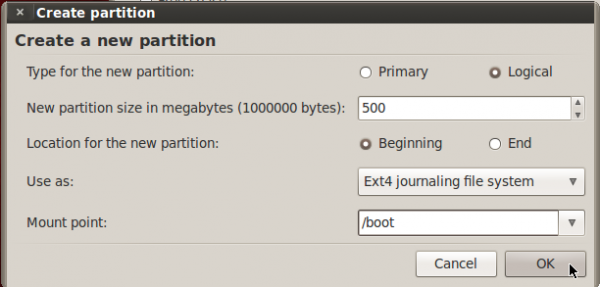
For the second partition, which will be mounted at /, which all the programs will installed, you can assign as much disk space as yo have available. How much will depend on how you want to use the system. Note that a new installation of BackTrack 5 R2 GNOME takes up more than 12 GB of disk space, so this partition should be assigned at least 20 GB. That is for a test system. Choose Ext4 for the file system too, and / as the mount point. Just to note, I also created it as a logical partition. OK.
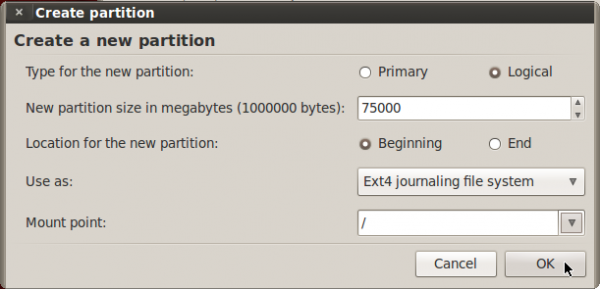
For the Swap partition, which will be the last, a disk space of 4 GB should be enough. For guidance on how much disk space to allocated to Swap, see the answer to a question at the Forum. OK.
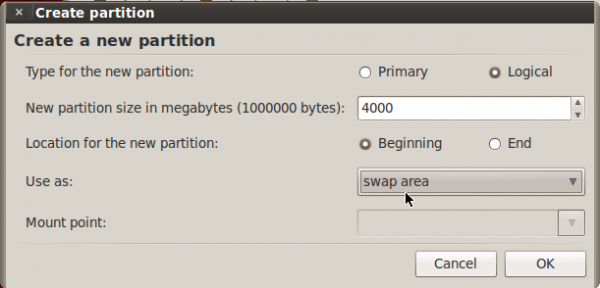
Back to the main partitioning window, you should see the partitions you just created. Because they are all logical partitions, the partition numbers begin from 5, which is the first logical partition number on a Linux system. Notice that I left some disk space unallocated. You do not have to do the same, but it never hurts. Click Forward to continue with the rest of the installation.
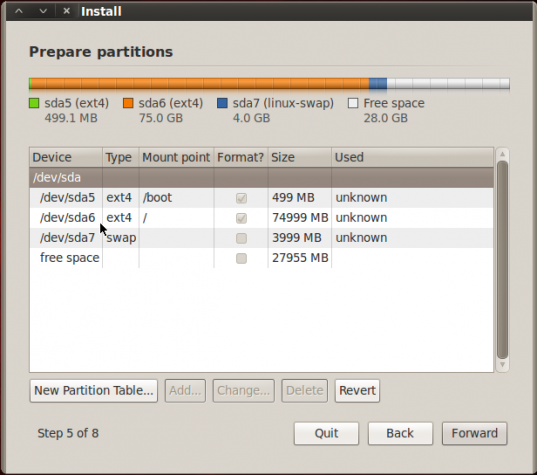
The next important task to consider for any installation of BackTrack 5 R2, GNOME or KDE, is where GRUB, the boot loader should be installed. By default, the installer will want to install it in the Master Boot Record (MBR). That is tech jargon for the beginning of the hard drive. This is good, if BackTrack is going to be the only operating system on the hard drive. On a dual-boot system, say with Windows 7, where you do not want GRUB to overwrite the contents of the MBR, the best location for GRUB will be the boot partition. In such a case, this is where you change the location for GRUB. By the way, you access this inset window by clicking on the Advanced button at Step 8 of the installation process.
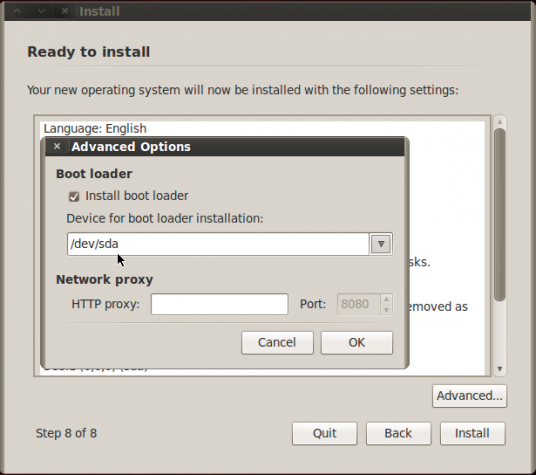
After installation has completed and on reboot, BackTrack will not boot into a graphical desktop. You will find yourself staring at a command prompt. You are expected to login, then start the graphical desktop. To login, use root as the username, and toor as the password. Once logged in, start the graphical desktop by typing startx at the command prompt.
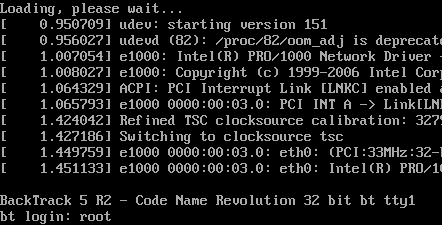
This is what the desktop should look like. In this screen shot, notice the amount of disk space used for the / and boot partitions in the output of df -h.
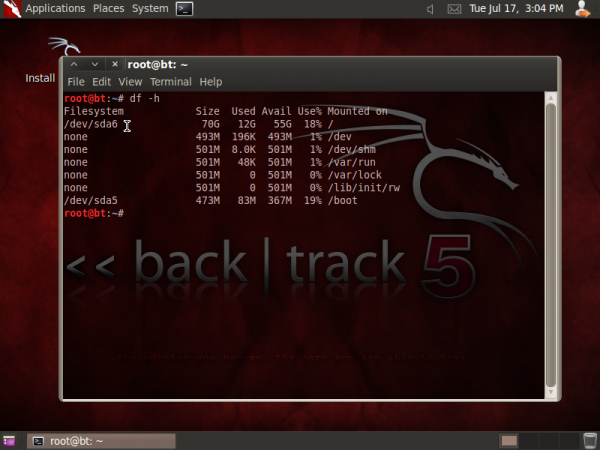
This is just a screen shot of the application categories. Got questions? Just ask. Use the comment box or ask at the Forum for a more engaging discussion.
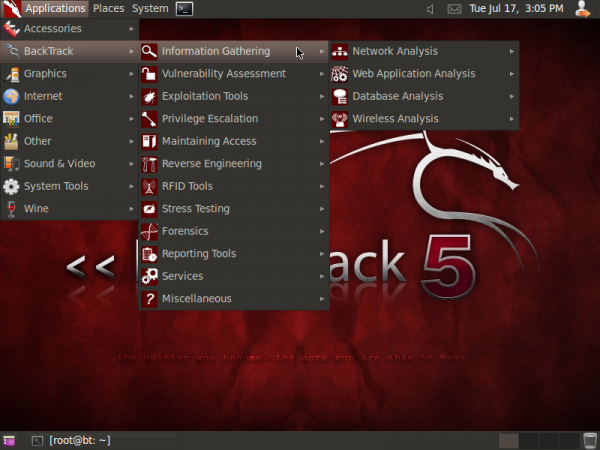


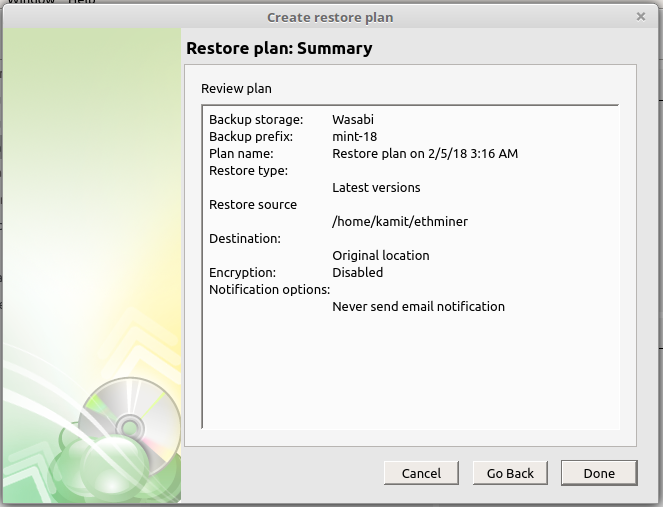
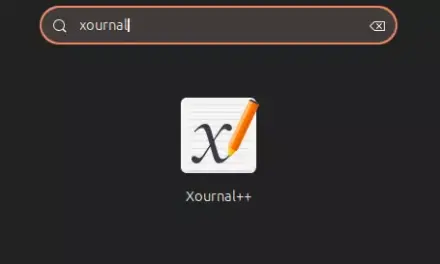
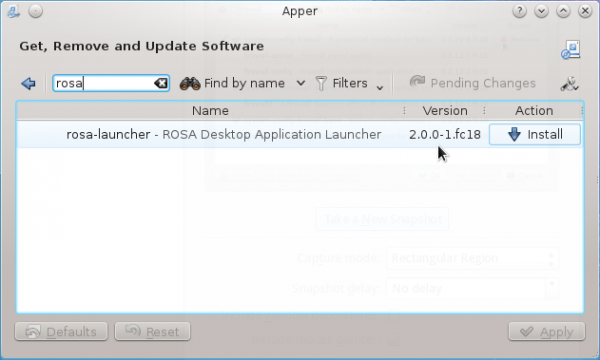
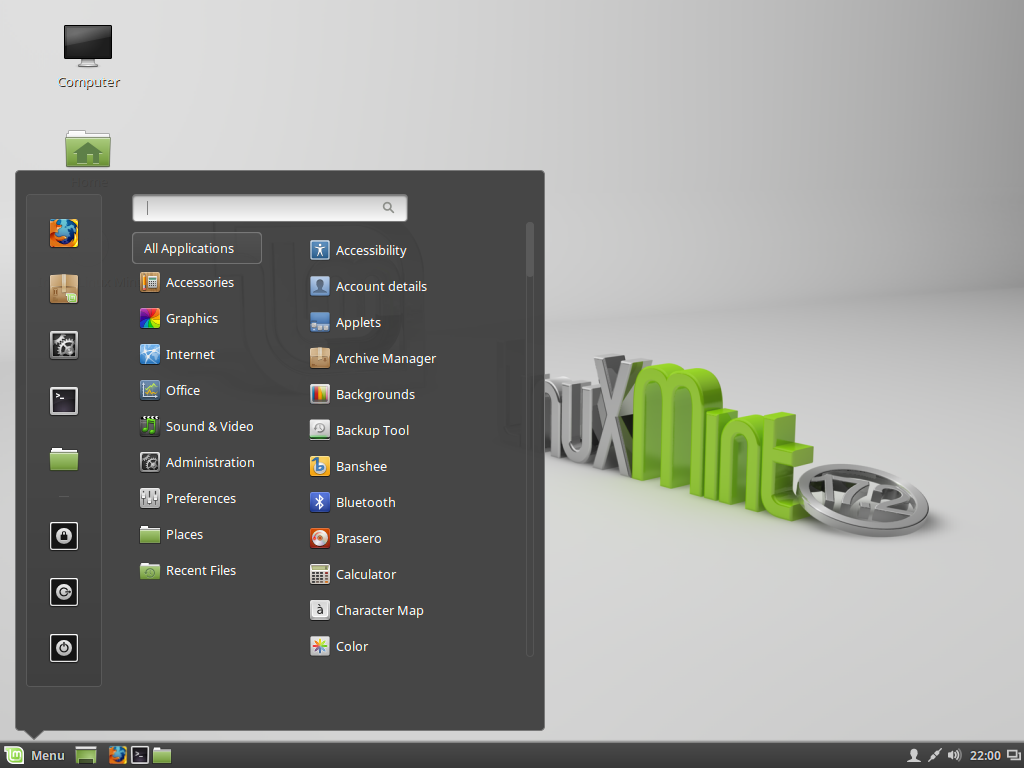


i am unable to see my wifi network on backtrack 5 r3
even it is not searching for the wireless network.
how can i solve this problem.
Hello there.
Nice Guide.
1st. I want to ask you, because I have read other tutorial. He mentioned that the boot is installed on the same drive of the program partition(sda6 in your tutorial). while you make the boot its own partition.
What is the difference? I really would like to know.
2nd. I always forget to do the “install boot loader” on the last step of the partition. Is this the reason i always fail to install burg?
I always get this after i installed burg.
‘noveau invalid rom contents’ bla bla bla.
Anyway, good tutorial. Thank you admin.